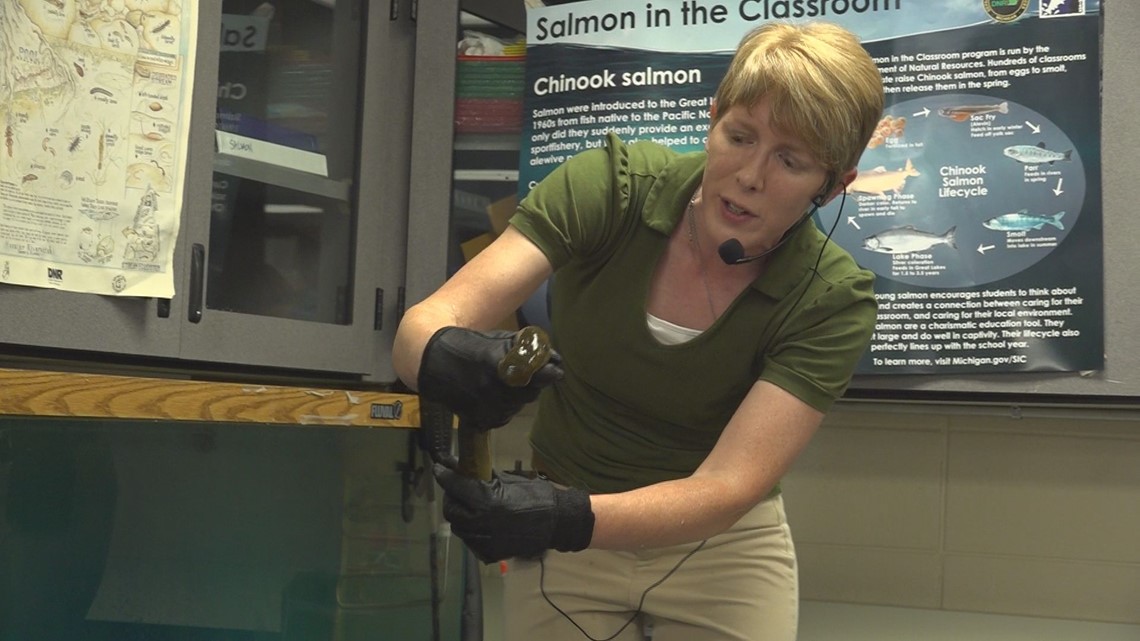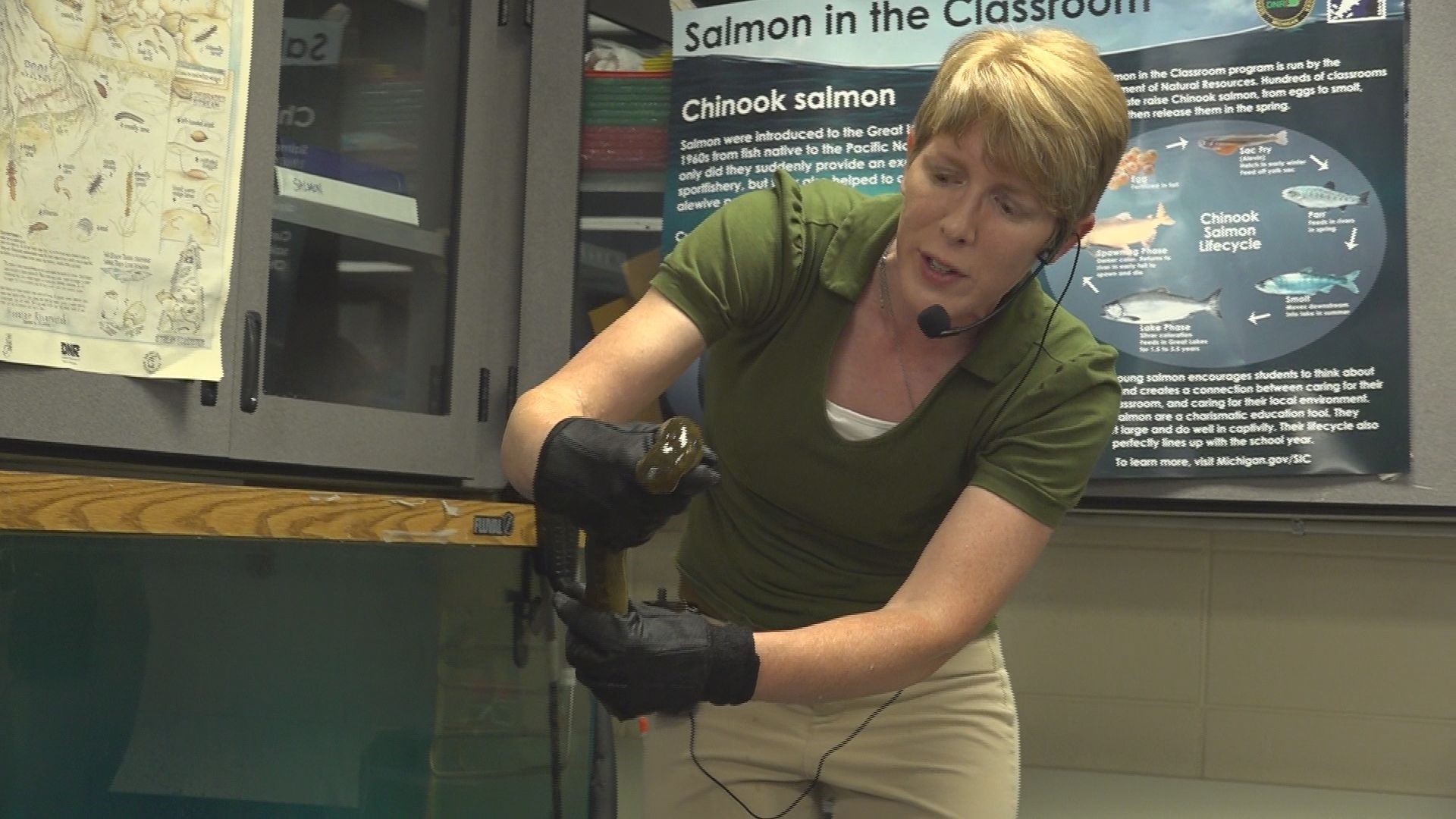OTTAWA COUNTY, Mich. — It’s not the traditional pet one would find in the classroom, but “Edward” the vampire-like sea lamprey has been giving students at Macatawa Bay Middle School a lesson they won’t soon forget.
“At first I thought I was actually like, really scary,” said seventh grader Ariana Vidales. “Last year, we also saw it – it was actually really cool, how to like, see it latch on.”
The demonstration is a part of the Sea Lamprey in Michigan Education (SLIME) program, a partnership between the Great Lakes Fishery Commission and Michigan Department of Natural Resources (DNR) that works to educate students across the state about creatures invasive to the Great Lakes ecosystem.
“When you're looking at only graphs…they don't develop a connection to the topic,” said science teacher Allison Engeseth. “When we bring in live sea lamprey, courtesy of the DNR, it is such a unique and powerful experience – these are animals that these kids would not get to see otherwise, even in zoos.”


On multiple occasions, Engeseth would allow “Edward” and its suction cup-like mouth to sink its hooked teeth into her arm. Though it was difficult for some to watch, her entire classroom was engaged.
“When they see a live lamprey, especially one that I can get to attach to my arm, that develops a really powerful connection to that animal,” she said. “That connection develops a sense of interest and caring.”
Sea lampreys are jawless, scaleless, parasitic fish that are native to the Atlantic Ocean. The NOAA states that one lamprey kills about 40 pounds of fish every year.
According to the National Park Service, the first recorded observation of the creature in the Great Lakes was in 1835 in Lake Ontario. At the time, Niagara Falls served as a natural barrier, preventing the parasitic fish from entering the remaining Great Lakes. The creation of manmade locks and shipping canals in the 1800s later came with an unintended consequence of introducing lampreys to the Great Lakes.
The Great Lakes Fishery Commission detail successful control of the species through the means of trapping, creating barriers and using specific chemicals called lampricides.
While being able to see the creature up-close can be unsettling at times, it gives students a unique opportunity, and furthers interest in marine biology.
“I think it's really inspirational because when I grew up, I want to be somewhere where you deal with marine animals,” Vidales said. “I think it's really cool how we get these types of lessons, because other school districts don't.”
Similarly and probably less frightening, Engeseth’s students also participate in Salmon In the Classroom (SIC).
►Make it easy to keep up to date with more stories like this. Download the 13 ON YOUR SIDE app now.
Have a news tip? Email news@13onyourside.com, visit our Facebook page or Twitter. Subscribe to our YouTube channel.

